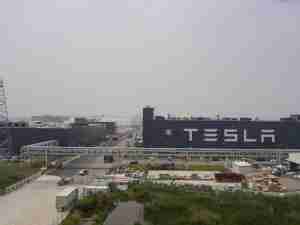Key insights:
1 Ex-Asia ocean rates have climbed about $1,000/FEU on early-month GRIs as Red Sea diversions keeping capacity tight combined with signs of unseasonal increases in demand have carriers hopeful that these rate increases will stick.
2 Reports of rolled containers to N. Europe may reflect improved volumes and the start of a restocking cycle by importers on this lane.
3 Some rail congestion in LA/Long Beach may point to climbing demand to N. America too, possibly due to some shippers pulling peak season shipments forward out of concern that Red Sea diversions or potential labor disruptions at East Coast and Gulf ports might cause delays during the normal busy season.
4 In air cargo, there is some optimism that volume strength will continue into Q2. Rates out of China dipped slightly last week to $5.43/kg to N. America and $4.08/kg to N. Europe, but remain well above typical slow season levels due to continued strong e-commerce volumes. Middle East and S. Asia export rates have leveled off but remain elevated on some Red Sea-driven shift to air.
Ocean rates - Freightos Baltic Index:
• Asia-US West Coast prices (FBX01 Weekly) increased 10% to $3,404/FEU.
• Asia-US East Coast prices (FBX03 Weekly) climbed 10% to $4,703/FEU.
• Asia-N. Europe prices (FBX11 Weekly) increased 6% to $3,550/FEU.
• Asia-Mediterranean prices (FBX13 Weekly) increased 4% to $4,445/FEU
Air rates - Freightos Air Index
• China - N. America weekly prices fell 4% to $5.43/kg
• China - N. Europe weekly prices fell 7% to $4.08/kg.
• N. Europe - N. America weekly prices fell 2% to $1.77/kg.
Analysis
"Ex-Asia ocean rates that started climbing last week on May 1st GRIs have now added about $1,000/FEU across these lanes compared to the end of April, with the latest daily rates reaching about the $4,000/FEU mark to the US West Coast and N. Europe, $5,000/FEU to the Mediterranean and about $5,400/FEU to the East Coast.
Should these rate increases stick, the common driver supporting them would be the combination of increasing demand with the market’s overall capacity being fully employed due to Red Sea diversions – with Houthi attacks continuing this week – even as the global fleet continues to grow on new vessel deliveries.
Diversions and disruptions leading to tight capacity on the overall network level help explain the elevated rates observed even on non-Suez Canal lanes. And Red Sea adjustments continue to disrupt some schedules and cause backlogs in places like India and Dubai with the recent bad weather causing delays in Asian origin hubs also not helping strains on capacity.
If price increases are maintained, they would reflect already tight capacity coinciding with a somewhat unexpected and unseasonal climb in demand. In N. Europe, recent reports of tight capacity and rolled containers are being attributed by some to improved volumes and the possible start of restocking by European importers.
For transpacific trade signs of an increase in imports include reports of some rail congestion for arriving imports at the ports of LA and Long Beach. With April and May typically slow months for ocean freight, an increase in volumes now may reflect some shippers pulling peak season shipments forward out of concern that Red Sea diversions or potential labor disruptions at East Coast and Gulf ports might cause delays during the normal busy season.
In air cargo, there is some optimism that Q1’s unexpected volume strength will continue into Q2. Freightos Air Index rates out of China dipped slightly last week to $5.43/kg to N. America and $4.08/kg to N. Europe, but remain well above typical slow season levels due to continued strong e-commerce volumes. Prices out of the Middle East and S. Asia have leveled off but likewise remain elevated as some Red Sea-driven shift to air is keeping demand strong."









